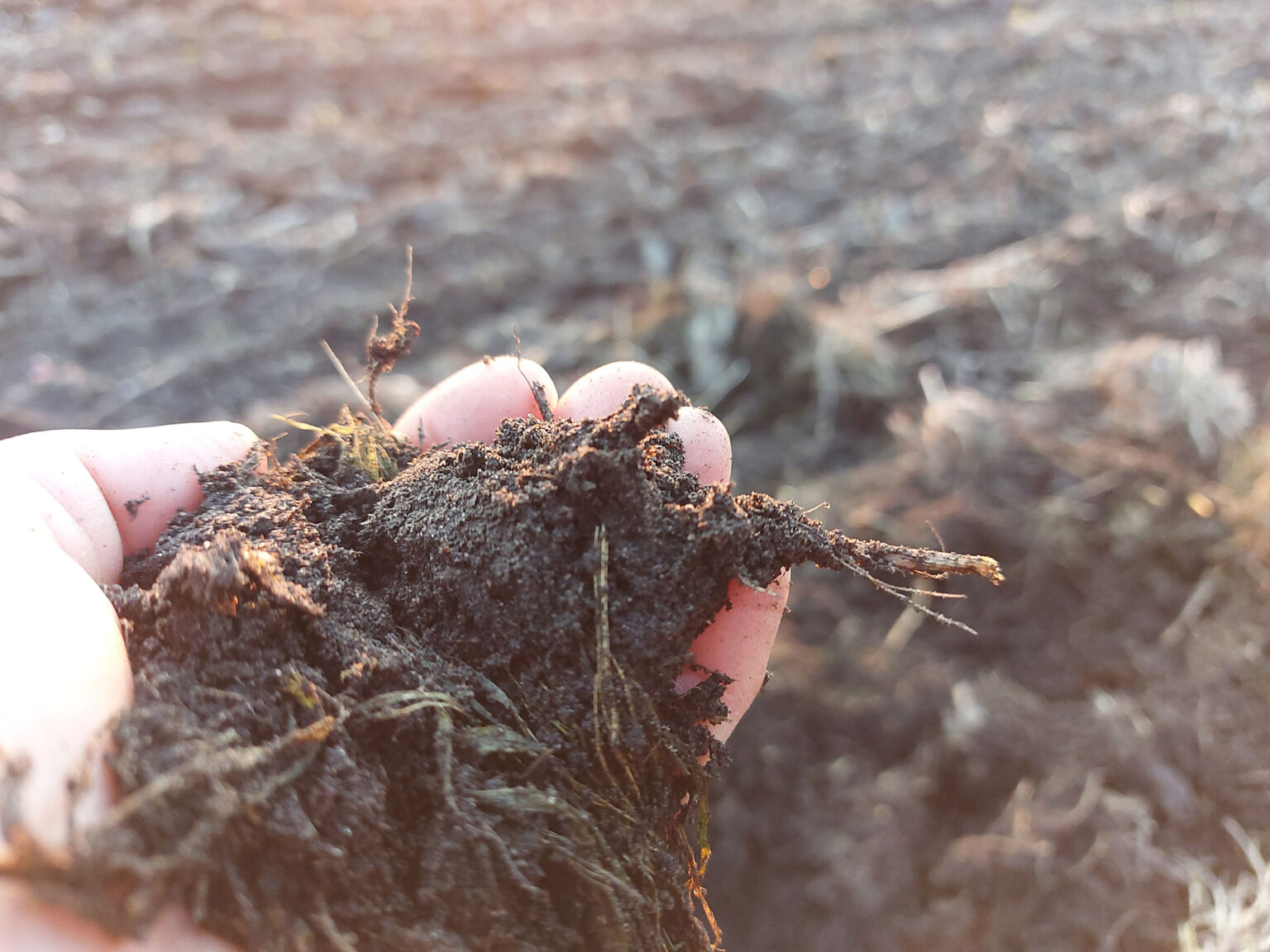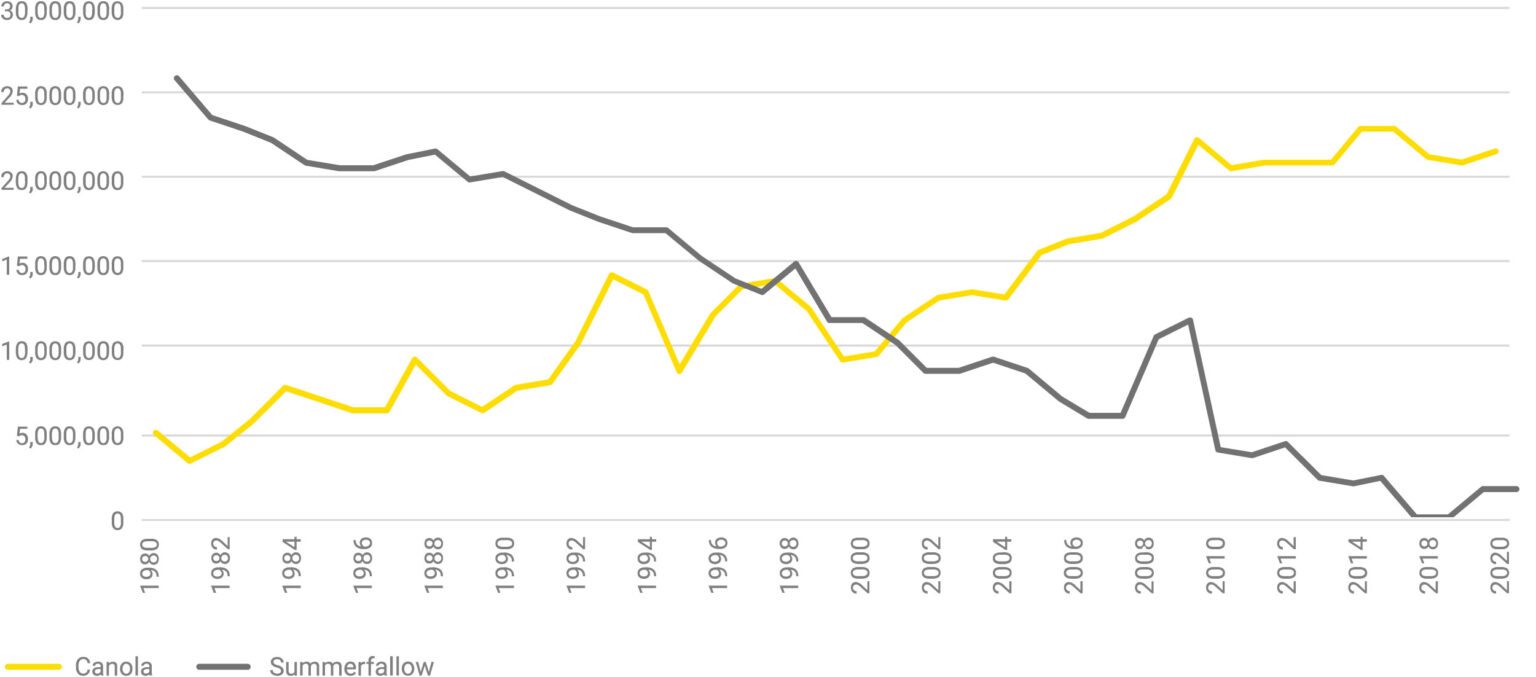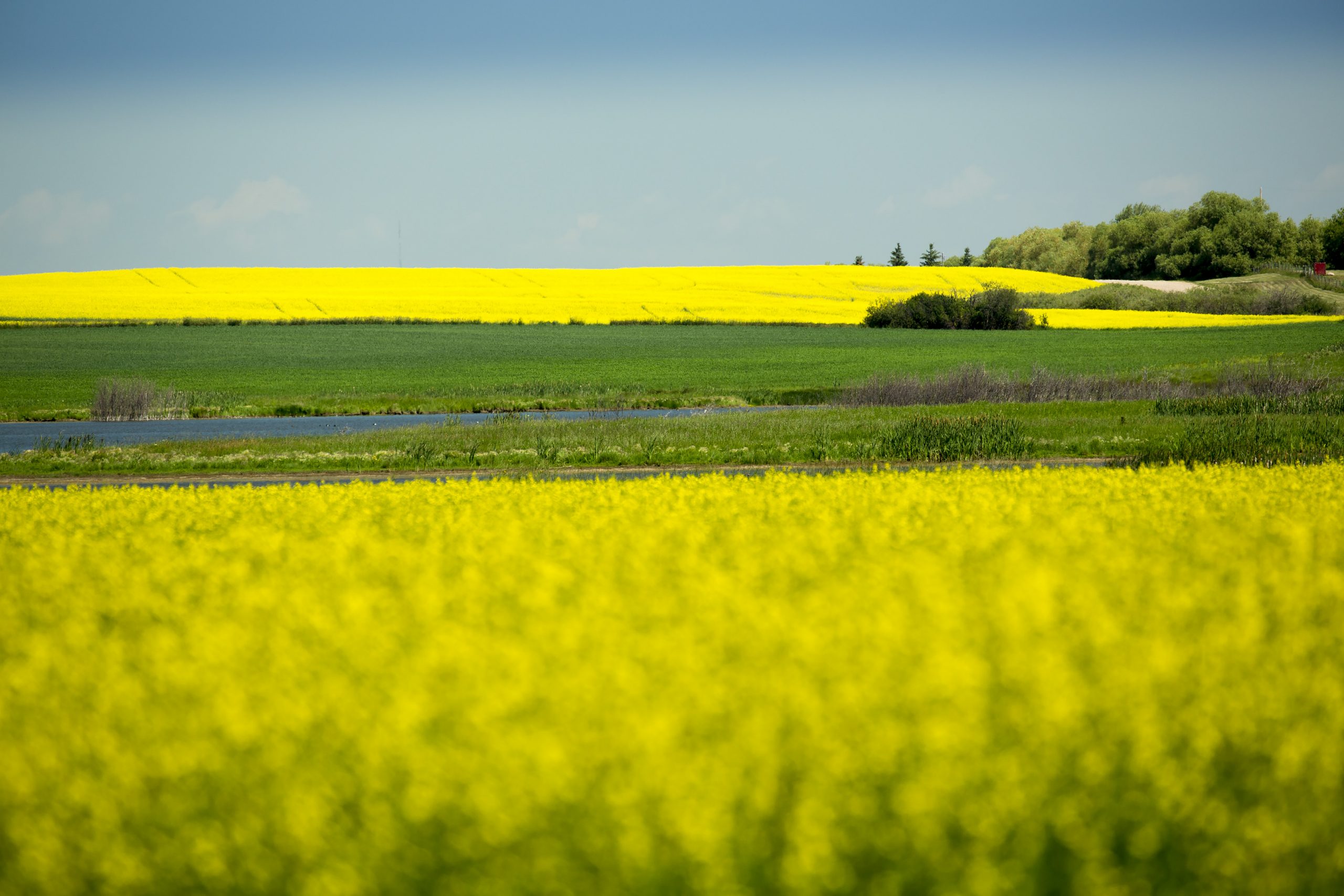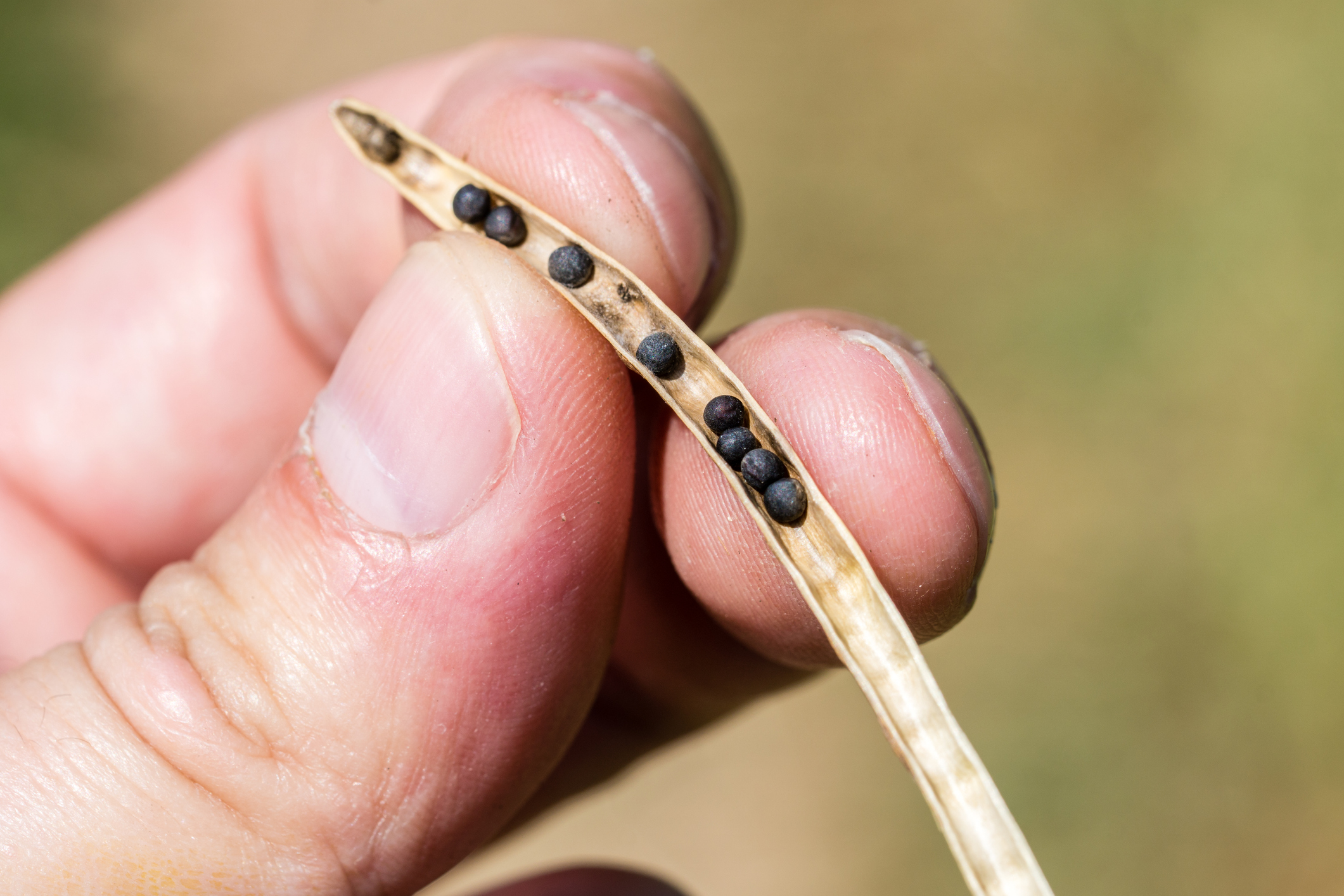
Soil is an essential resource for agriculture, but summerfallow – cropland that is purposefully kept out of production during the growing season – is especially at risk for soil erosion.
Erosion primarily affects the topsoil, which is rich in organic matter – an important soil component that stores and supplies many nutrients as well as carbon dioxide captured from the atmosphere.
Topsoil erosion results in loss of organic matter and stored carbon, and can also make the land less fertile, affecting productivity, and ultimately profitability for the producer.
The loss of soil from farm fields can also cause water quality issues.
Nutrients, pesticides and pathogens can attach to soil particles and move into water bodies with the eroded soil. Sedimentation – the build-up of fine particles in water bodies – can also affect aquatic species.
Topsoil conservation – past & present
Over the past 40 years, summerfallow has been displaced by land seeded with canola, helping to preserve hundreds of millions of tonnes of topsoil and organic matter, along with the carbon and nutrients stored within it.
Summerfallow – dramatic decline in acres

Dramatic reduction in soil loss per hectare, Prairie provinces

Conservation tillage
Canola has also helped prevent soil erosion by enabling the adoption of conservation tillage practices.
One of the greatest challenges in growing canola is competition from weeds. In 1991, just 7% of Western Canadian farmland was seeded with no-till practices, meaning most farmers relied on tilling the soil to remove weeds from their fields.
With the introduction of herbicide-tolerant canola in the mid-‘90s, farmers had the option to forgo tillage passes and use smaller amounts of herbicides to control weeds.
By 2016, 65% of all farmland in Western Canada followed no-till practices, an increase of 58% over two and a half decades.
Types of tillage across Canada

The figure below shows the dramatic reduction in soil erosion risk, as a result of the increase in conservation tillage (which includes no-till and minimum till practices).
Soil erosion risk in the Prairies

By permanently replacing summerfallow acres with canola, a crop that sequesters a significant amount of carbon, and adopting conservation tillage practices, we’ve helped retain our soil resource, ensuring that we will have a viable, healthy and valuable farmland base for many generations to come.
Where we’re headed
Improved soil and water health
Utilize 4R nutrient stewardship practices on a growing number of canola acres
In addition to displacing summerfallow and switching to conservation tillage, the canola industry is investing in research and adopting innovative and sustainable practices that continually improve soil and water health.
This includes the use of precision agriculture technologies to optimize crop input use, practicing effective crop rotations and following 4R nutrient stewardship practices.
The Canadian canola industry’s unique network of agronomists helps canola farmers implement 4R nutrient stewardship practices (Right Source @ Right Rate, Right Time, Right Place) for the responsible use of important plant nutrients like nitrogen fertilizers.
The goal of these practices is to match nutrient supply with crop requirements, minimize nutrient losses from fields and reduce nitrous oxide (N2O) emissions. While some farmers have already started implementing 4R practices, there’s much more we can do.
Our goal is to utilize 4R nutrient stewardship practices on a growing number of Canadian canola acres. Following the 4Rs will lead to improved nutrient use efficiency, which is good for both farm profitability and soil and water health.




